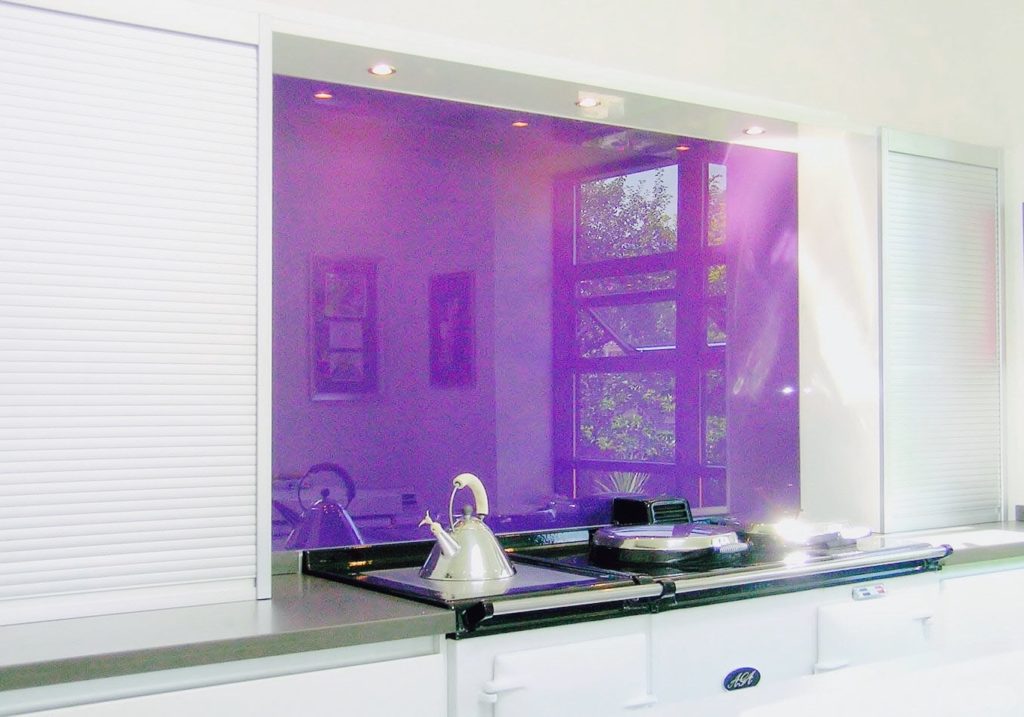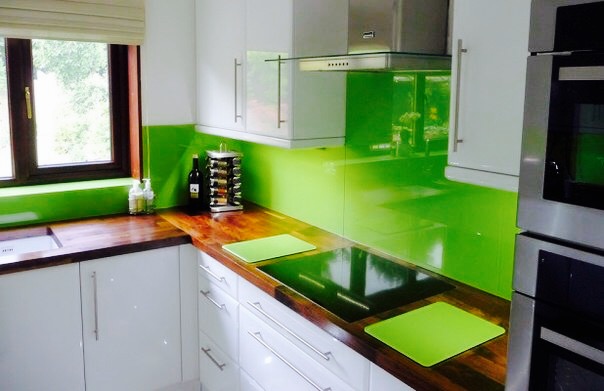A backsplash adds personality to a kitchen. Here are tips on choosing the right tile.
When it comes to designing a kitchen, a backsplash is one area where you can have some design fun. While the cabinets tend to be a practical choice and the countertops a question of utility, a backsplash finishes off a kitchen’s look.
“A backsplash is the black dress,” says Shannon Kadwell, an interior designer with Anthony Wilder Design/Build in Cabin John. “It should be something you notice when you walk in the room, but it should be able to fit every occasion–and your personality.”
Here’s what you might think about before adding wow to your walls.
With lots of tiles and backsplash options, consider which material will fit your needs.
“Is it most important to you that it’s easy to clean?” Stephanie Pritchard, a kitchen designer at Middleburg Design Company, asks. “Or is the aesthetic of the tile most important?”
Ceramic and porcelain tiles are impervious to stains, so you don’t have to worry about a pot of spaghetti sauce boiling over. Glass tiles also are a safe choice because upkeep is easy–a quick wipe with a sponge and these tiles should look new.
Natural-stone backsplashes, while beautiful, are riskier. Many are porous. They chip. And they’re hard to clean. Honed natural stones such as limestone, slate, or marble can spot with grease, says Jennifer Gilmer of Jennifer Gilmer Kitchen & Bath. Natural-stone backsplashes should be resealed at least once a year.
If you’re a passionate home cook, steer clear of tiles with a lot of texture, such as stacked or rough tiles. Grease can find nooks and crannies, and it could take hours to clean. “You’re not going to want to choose anything that requires a scrub brush,” says Pritchard.
Subway tiles–replicas of the classic rectangular white ceramic tiles used in the New York City subway–are still popular.
But rather than a backsplash with standard two-by-six-inch white tile, Gilmer suggests glass subway tile arranged in a classic fashion or an installation using small ceramic subway tiles or large natural stone ones.
Homeowners with more contemporary taste might position the tiles vertically rather than horizontally or run smaller vertical subway tiles above the cooktop and cover the rest of the kitchen walls in horizontal classic-size tile.
Stacked tiles, a three-dimensional installation that positions tiles of different depths throughout the backsplash, are becoming more popular despite how hard they can be to clean. “It looks like stacked stone,” says Pritchard. “Homeowners tend to like the organic look.”
Several designers report that clients are increasingly drawn to glass backsplashes, particularly painted glass. A large piece of glass is sized to your kitchen backsplash, holes are cut out for electrical switches and outlets, and the back of the glass is painted any color you choose. “They are seamless,” says Gilmer. “It tends to work well in contemporary kitchens, where a clean and uninterrupted look is best.”
Backsplashes are also getting bigger. Rather than just tiling from the counter to the cabinet, many homeowners are choosing to go all the way up to the ceiling, which can make cabinetry look as if it’s hanging on a tiled or existing stone wall. “It gives the room more height and space,” says Kadwell.
Best Tile for My Kitchen?
If your kitchen is small, you might consider a magnetic backsplash, such as corrugated sheet metal or metal tiles. “People want to use every bit of their space,” says Pritchard. “So they hang their knives from their backsplash. One client got magnetic canisters to hold spices.”
Mirrored backsplashes, which are gaining in popularity and lend a kitchen a bit of glamour, reflect light around a dark kitchen and make the space feel bigger. “It’s actually very easy to clean,” says Pritchard. “You just use pure vinegar.”
Any tile made from glass tends to feel lighter and brighter, says Kadwell, and can help reflect light around a dark room.
Homeowners with a big kitchen might consider a more basic tile–a colorful mosaic style could feel busy in a large kitchen. Simple tilework also works best in a kitchen with a lot of windows, where complicated tiles can seem disjointed.
While hundreds of colorful tiles are readily available, many designers shy away from too much color in the backsplash. When clients are drawn to bold colors such as yellow, red, or orange, Leslie Roosevelt, a designer with Gilday Renovations in Silver Spring, nudges them gently.
“Stick to boldness in the paint color,” she tells them. “Go with a more monochromatic or architectural backsplash that will allow your personal taste to change.”
A backsplash is as expensive as you make it. Tiles can run from as low as $2 a square foot for a basic ceramic tile to $100 a square foot for natural stone or hand-glazed.
One way to save money is to mix different types. Maybe you’re doing most of your kitchen in an affordable, simple tile–consider investing in several glazed tiles to insert in a random or intentional pattern through the backsplash. Some homeowners splurge on the tile over the cooktop, because it’s often a focal point, and spend less on the rest of the walls.
When figuring out how much to allot for your backsplash, think about this: A skillful designer can make less expensive materials look like the highest quality. “It’s not necessarily about the materials used,” Gilmer says. “It’s how they are used.”
This article appears in the October 2011 issue of The Washingtonian.



